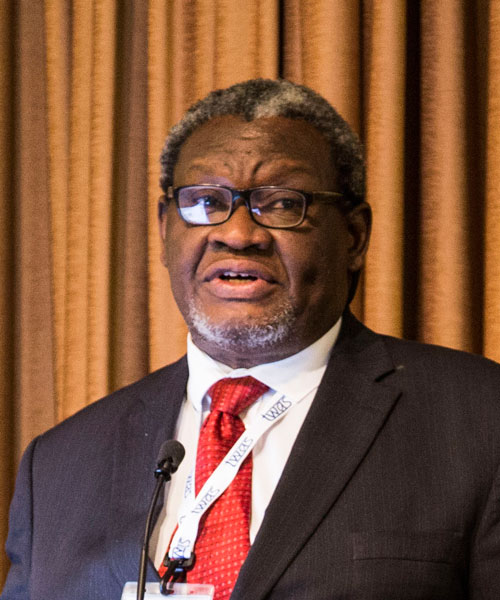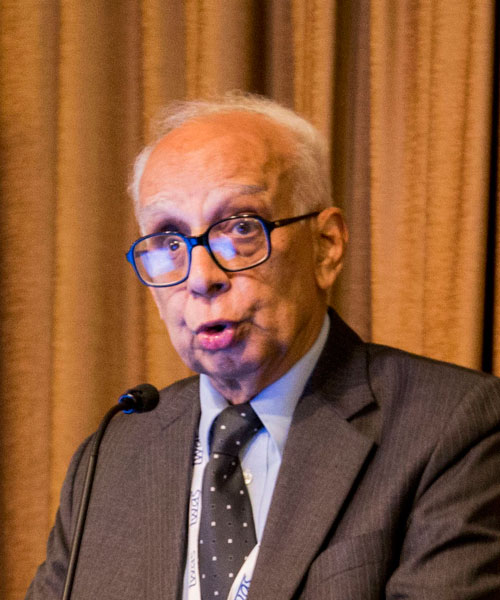When a terrible explosion occurred in November 2015, a 34-year-old Nigerian factory worker named Ibrahim was probably thinking of the end of his day, when he would join his family at home. At the factory he was mixing some dangerous chemicals, but something went wrong and a sudden blast profoundly damaged his face and the eyes, changing his plans and life.
In May 2017, when Ibrahim's injuries had passed the most acute phase, he received a transplantation of stem cells – an allograft – with his father serving as donor. That intervention helped restore his sight.
"This relatively new technique, called simple limbal stem cell transplantation, offers incredible potential for treating eye diseases arising from limbal stem cell damage," said Ayobade Ogundipe, an ophthalmologist from University College Hospital, Ibadan, Nigeria, who spoke at the 28th TWAS General Meeting in Trieste, Italy. "Limbal stem cells are cells committed to turn into a specific, more mature, cell type under proper treatment. In this case, they became the cell type that we needed to restore the corneal tissue."
Ogundipe, an associate lecturer in the University of Ibadan College of Medicine, completed his basic medical training at the University of Jos Medical School in central Nigeria. Then he did his residency in ophthalmology at University College Hospital and his post-residency training in cornea and anterior segment surgery at the LV Prasad Eye Institute in Hyderabad, India.
There he met TWAS Fellow Dorairajan Balasubramanian, a distinguished scientist and director emeritus of research at the Institute. They established an ongoing partnership, and both presented lectures on 28 November 2018 in a symposium titled "Breakthroughs in Science of Stem Cells and Gene Editing", which Balasubramanian also chaired.
Stem cells are undifferentiated cells that have the potential to turn into new and more mature cells, acquiring features that were not present at earlier stages. In the human body this happens spontaneously, as a consequence of the natural cellular turnover, or when a tissue needs to be repaired after damage or disease. In the lab, growing stem cells in the right medium can induce the maturation process.
"Stem cells are routinely used in two areas of eye care: cornea and retina," Balasubramanian explained in his presentation. "And we are lucky, because in the eye there is a specific area called limbus, rich in stem cells that have the potential to regenerate other layers of the eye, in particular the corneal layer in case of scars or accidental damage, as dr. Ogundipe has pointed out."
The ocular surface is made of a layer called conjunctiva, or sclera, and the limbus - a ring surrounding the corneal epithelium, which is covered by a thin film of tears. The corneal epithelium is constantly self-renewing throughout life, Balasubramanian said, thanks to the presence of stem cells, located at the limbus, close to the junction between the sclera and the epithelium.
"In the past, limbal cells were harvested from the limbus and transfered to grow in a culture dish," Ogundipe said. "There, these committed progenitors matured into specialized cells that would still retain the stem cell characteristics. These can reproduce the terminally differentiated corneal epithelial cells that would restore the ocular surface when transplanted on the eye." Expanding limbal stem cells in the laboratory was, in fact, the first strategy that ophthalmologists adopted. Now the technique has become even more straightforward.
"Today we achieve better results by directly transplanting stem cells harvested from the same patient, or using tissue from a dead body, or a living donor," Ogundipe added.
The latter procedure was used in Ibrahim's case. In the stem cell transplant at University College Hospital, doctors harvested tiny piece of limbal stem cells from Ibrahim's father and transplnted them directly onto the burnt cornea in Ibrahim's eyes, with a minimally invasive intervention. Medication, bandage contact lens and rest helped the recovery. Today Ibrahim walks independently again, he is autonomous, despite his sight has not been completely restored due to the fact that too much time had elapsed from the accident to the day of surgery.
"In two weeks' time, the patient regained a fair percentage of his eyesight," Ogundipe said. And even better results could have been achieved had he followed more strictly doctors' prescriptions. Unfortunately, this is sometimes the weak point of the technique, Ogundipe added. The intervention itself is relatively inexpensive, but follow-up medicines are not. And often patients cannot afford a whole cycle of medications needed to prevent tissue rejection in allograft transplants.
Unlike the cornea, the retina in the rear part of the eye does not have stem cells. Hence there is the need to produce them in laboratory for treatment of retinal disorders. "Using a technique discovered by Japanese researcher Shinya Yamanaka in late 2006, and now widely used also in India, we can take an adult cell and force it to revert to an undifferentiated, or pluripotent state," explained Balasubramanian in his lecture. "This cell is what we call induced pluripotent stem cells, and the technique is called 'somatic cells reprogramming'."
Balasubramanian, an Indian chemist and ophthalmologist, is known to many colleagues as Professor Balu; he has been a TWAS Fellow since 1997. Over the course of his prolific career, he has received a number of awards including the National Order of Merit in France and in 2002 the Padma Shri, the fourth highest Indian civilian award from the Government of India. From 1992 to 1998 he served as the director of the Centre for Cellular and Molecular Biology in Hyderabad; today he is a leading scholar in the biology of the eye, specialising in stem cell technologies, and a Distinguished Scientist at the LV Prasad Eye Institute, Hyderabad, India.
"Adult cells can be reprogrammed to become pluripotent again by activating four genes that produce specific factors," he said. It is like changing their job description: skin cells can go back to an embryonic-like stage where they are no longer skin elements, and then stimulated again to become retina cells. At his Institute, this technique is now getting more robust and being tried on rats, before turning to humans.
Despite much progress and great knowledge acquired in stem cell therapy, however, there is still much work to do. Especially in Africa, where clinical work remains in its an early phase.
"We need collaboration with centres outside Nigeria," said Ogundipe. "I had the opportunity to train at Prasad Institute with Professor Balu. Now it's time to train younger clinicians in Nigeria, too."
Cristina Serra

